In the Navy:The Role of Advanced Sea Mines in Future Conflicts
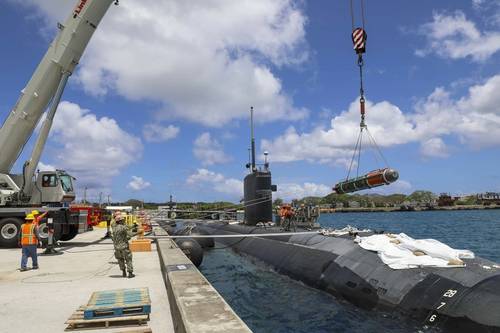
Sailors assigned to the Los Angeles-class fast-attack submarine USS Annapolis (SSN 760) load a MK 67 submarine launched mobile mine (SLMM) onto Annapolis, May 4. Annapolis will be conducting maritime operations in the U.S. 7th Fleet area of operations to maintain a safe and open Indo-Pacific. (U.S. Navy photo by Mass Communication Specialist 2nd Class Zachary Grooman).
When it comes to war, the old adage that the best defense is a good offense rings true. Nowhere is this more the case than naval warfare, where initiative can make the difference between victory and defeat. As an integral part of naval warfare, mine warfare – both mine countermeasures and mine laying, or “offensive” mine warfare - will continue to influence naval operations.
Yet the latter of these sub disciplines - the “other” mine warfare, as Admiral James Winnefeld, Jr. calls it - has often been missing from mine warfare discussions. But as defense strategists assert that sea mines will play a role in future conflicts, particularly in a war over Taiwan, attention is increasingly being paid to this critical, if unglamorous, aspect of maritime operations.
From the Revolutionary War to the present day, offensive mining has been a significant factor in warfare at sea, sending ships and sailors to the bottom of the ocean, influencing enemies to alter or abandon operations, or even forcing belligerents to the negotiating table. Mines are cheap, easy to deploy, and capable of generating tactical, operational, and strategic effects. Although highly destructive, they can also be highly disruptive; the mere presence of mines can impede merchant shipping, rattle global markets, or grind naval operations to a halt. And they don’t have to be advanced to generate far-reaching effects, as we’ve seen recently in the Black Sea, where unsophisticated, Soviet-era contact mines have threatened grain shipments, and may have staved off a Russian amphibious assault on Odessa.
Estimates of sea mine stockpiles vary, but Russia is thought to possess as many as a quarter million, with eighty thousand for China, fifty thousand for North Korea, and between three and six thousand for Iran. China has demonstrated a particular interest in offensive mining, and may possess as many as thirty different variants in its inventory, including encapsulated torpedo mines and rocket-propelled rising mines.
Lying in stark contrast is the US. Navy’s mine inventory, with just two types of mines currently available- the Quickstrike and the Submarine Launched Mobile Mine (SLMM) - while two additional models, the Clandestine Delivered Mine (CDM) and the Hammerhead encapsulated torpedo mine, are under development. Quickstrikes are shallow water, air-dropped mines which are actually 500, 1000, and 2000 pound general purpose “dumb” bombs fitted with target detection devices (TDDs). SLMMs are essentially heavyweight torpedoes that transit to a preprogrammed waypoint, sink to the seabed, and lie in wait like a standard bottom mine. The status of the SLMM inventory is unclear, but an improved version, called MEDUSA (Mining Expendable Delivery Unmanned Submarine Asset), which the Navy actually refers to as a medium-class UUV, is under development.
Little is known of the CDM, which has been under development for over five years. Images in circulation suggest that it is a standard bottom mine, while budget documents indicate that it is capable of acoustic communication to enable remote command and control. The CDM has undergone testing with the Navy’s large displacement UUV (LDUUV), Snakehead, and, according to budget documents, it could also be deployed by the Orca extra-large UUV (XLUUV).
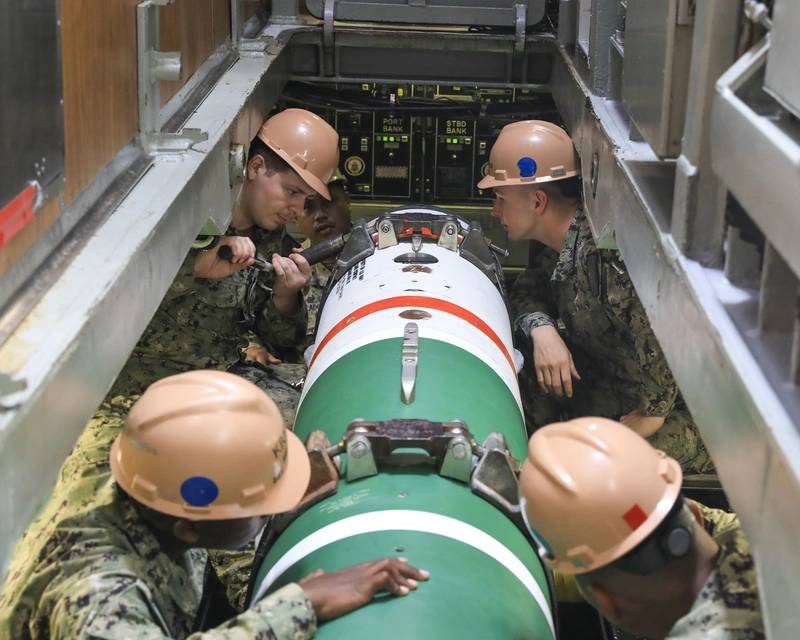 Sailors assigned to the Los Angeles-class fast-attack submarine USS Annapolis (SSN 760) load a MK 67 submarine launched mobile mine (SLMM) onto Annapolis, May 4. Annapolis will be conducting maritime operations in the U.S. 7th Fleet area of operations to maintain a safe and open Indo-Pacific. (U.S. Navy photo by Mass Communication Specialist 2nd Class Zachary Grooman).
Sailors assigned to the Los Angeles-class fast-attack submarine USS Annapolis (SSN 760) load a MK 67 submarine launched mobile mine (SLMM) onto Annapolis, May 4. Annapolis will be conducting maritime operations in the U.S. 7th Fleet area of operations to maintain a safe and open Indo-Pacific. (U.S. Navy photo by Mass Communication Specialist 2nd Class Zachary Grooman).
The Hammerhead is actually a throwback to a Cold War-era weapon – the CAPTOR (EnCAPsulated TORpedo) mine. It is a deep water, anti-submarine mine that can detect, classify, localize, and engage enemy submarines with a Mk-54 lightweight torpedo. Unlike the Quickstrike or CDM, the Hammerhead is being purpose-built for clandestine deployment by a single platform - the Orca XLUUV. Given the technological complexity of unmanned mine laying operations, as well as Orca’s production delays and cost overruns, it is likely that the Hammerhead will be fully tested and in production before the Orca is ready to join the fleet. Whether other Hammerhead variants are in the works that would enable deployment from air, surface, or manned undersea platforms is unknown.Advanced minelaying isn’t only for well-capitalized great powers. Recent commercial innovations are making offensive mining accessible to maritime nations seeking an affordable, viable sea denial capability in the face of growing threats from Russia and China. Italian company RMV Italia, for example, a division of German auto and arms manufacturer Rheinmetall, markets the Murena and Asteria bottom mines, and is rumored to be a possible future supplier to the Royal Australian Navy as Canberra seeks to deter Chinese maritime aggression. Finnish company DA-Group produces an advanced bottom mine, the Turso MM20, which can be fitted with a range of sensors, and operates at depths of 10 to 200 meters.
DA-Group also markets a modular minelaying system called Sumico, which is essentially a 20-foot shipping container that enables twelve mines to be deployed from any vessel of opportunity. Another Finnish company, Forcit Defence (part of Forcit Group), markets the Blocker bottom influence mine, which can be deployed for two years at depths of up to 200 meters. (In 2021, Estonia took delivery of Blocker mines to strengthen its coastal defense capabilities against an expansionist Russia.) And Danish company SH Defence markets a containerized minelaying system as part of its Cube series of modular defense payloads. Each container can accommodate between twenty and fifty mines, which can be deployed at a rate of two to four per minute. (In February of this year, Forcit, DA-Group, and SH Defence joined forces, signing a memorandum of understanding to jointly develop and market a fully integrated, modular mine warfare system.)
But even as sensor, communication, and deployment capabilities advance, sea mines remain what they have been for over a century - weapons that wait. Once deployed, they remain in place, awaiting the necessary sensor inputs that will trigger their destructive payload. But this is about to change – dramatically. For over half a century, a quiet, slow-motion convergence of mines, torpedoes, and UUVs has been underway, beginning during the Cold War with the development of the encapsulated torpedo mine. Although its modern-day descendant, the Hammerhead, now has a high-density energy source, more sophisticated sensors, algorithmic processing, and the ability to communicate, it still remains tethered to the seabed. What if the Mk-54 liquid fuel propulsion system were replaced with a high density battery-driven system, transforming it into a loitering, armed UUV? Such a weapon already exists, in the form of battery-powered torpedoes like the F21 (which was inspired by Naval Group’s D19 UUV), the Black Shark, the Sea Hake, the MU90, and the Saab Lightweight Torpedo (SLWT), all of which can reach speeds of 50 knots and have an endurance of nearly an hour. Endurance is perhaps the greatest challenge in the development of persistent, mobile minefields. Last year, Chinese scientists published a paper exploring the idea of miniaturized nuclear reactors powering heavyweight torpedoes. While largely aspirational, it underscores the broader, accelerating trend toward autonomous, self-organizing, high-endurance torpedo-mines.
By all indications, offensive mine warfare will play an important role in future conflicts. But the “mines” of tomorrow will be radically more dangerous than those of today. They will combine the persistence and coverage of conventional mines, the speed, lethality, and maneuverability of torpedoes, and the modularity, mobility, and autonomy of UUVs. Yet even as this convergence continues, our very understanding of what constitutes a sea mine may need to change. The recent Ukrainian armed USV attacks on the Russian Black Sea ports of Sevastopol and Novorossiysk suggest that mobile “surface mines” could come to be pose a uniquely dangerous threat to surface warships. We may soon find that offensive mine warfare is no longer confined to the undersea domain.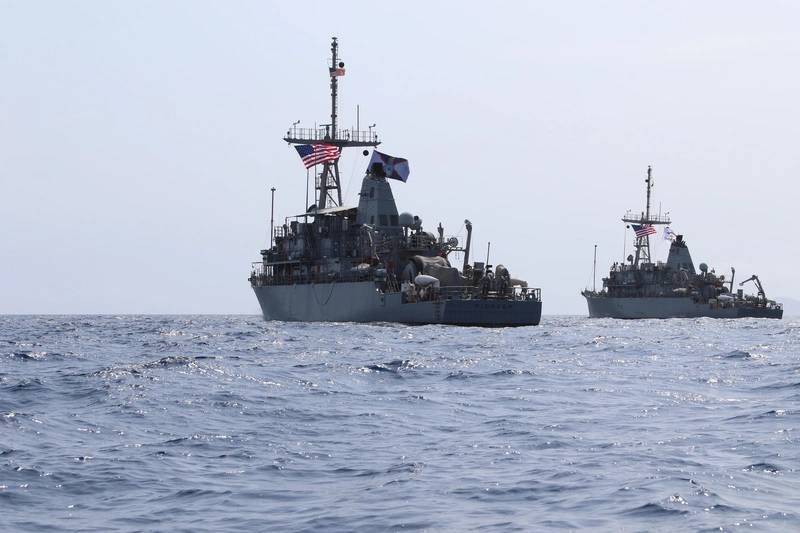 Avenger-class mine countermeasure ships USS Patriot (MCM 7) and USS Pioneer (MCM 9) conduct a mine warfare training exercise. Pioneer, part of Mine Countermeasures Squadron 7, is operating in the 7th Fleet area of operations to enhance interoperability with partners and serve as a ready-response platform for contingency operations. (U.S. Navy photo by Lt. j.g. Irving Garcia)
Avenger-class mine countermeasure ships USS Patriot (MCM 7) and USS Pioneer (MCM 9) conduct a mine warfare training exercise. Pioneer, part of Mine Countermeasures Squadron 7, is operating in the 7th Fleet area of operations to enhance interoperability with partners and serve as a ready-response platform for contingency operations. (U.S. Navy photo by Lt. j.g. Irving Garcia)


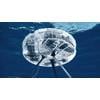

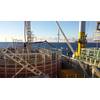

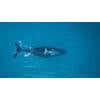




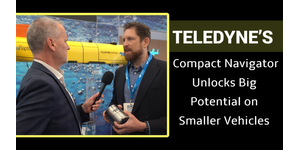


 February 2025
February 2025



